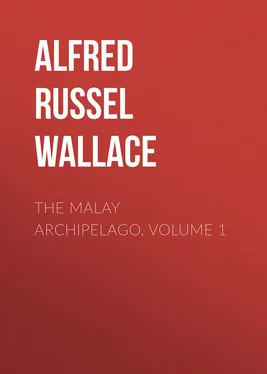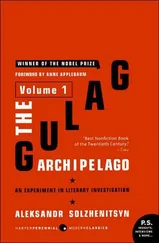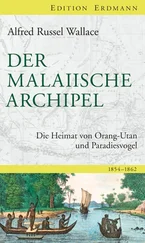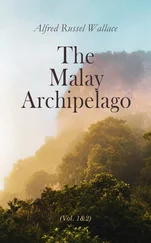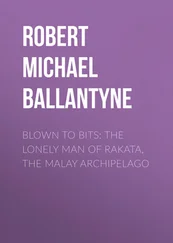Alfred Wallace - The Malay Archipelago, Volume 1
Здесь есть возможность читать онлайн «Alfred Wallace - The Malay Archipelago, Volume 1» — ознакомительный отрывок электронной книги совершенно бесплатно, а после прочтения отрывка купить полную версию. В некоторых случаях можно слушать аудио, скачать через торрент в формате fb2 и присутствует краткое содержание. Жанр: Путешествия и география, foreign_edu, foreign_antique, foreign_prose, на английском языке. Описание произведения, (предисловие) а так же отзывы посетителей доступны на портале библиотеки ЛибКат.
- Название:The Malay Archipelago, Volume 1
- Автор:
- Жанр:
- Год:неизвестен
- ISBN:нет данных
- Рейтинг книги:4 / 5. Голосов: 1
-
Избранное:Добавить в избранное
- Отзывы:
-
Ваша оценка:
- 80
- 1
- 2
- 3
- 4
- 5
The Malay Archipelago, Volume 1: краткое содержание, описание и аннотация
Предлагаем к чтению аннотацию, описание, краткое содержание или предисловие (зависит от того, что написал сам автор книги «The Malay Archipelago, Volume 1»). Если вы не нашли необходимую информацию о книге — напишите в комментариях, мы постараемся отыскать её.
The Malay Archipelago, Volume 1 — читать онлайн ознакомительный отрывок
Ниже представлен текст книги, разбитый по страницам. Система сохранения места последней прочитанной страницы, позволяет с удобством читать онлайн бесплатно книгу «The Malay Archipelago, Volume 1», без необходимости каждый раз заново искать на чём Вы остановились. Поставьте закладку, и сможете в любой момент перейти на страницу, на которой закончили чтение.
Интервал:
Закладка:
The river was now so shallow that boats could hardly get along. I therefore preferred walking to the next village, expecting to see something of the country, but was much disappointed, as the path lay almost entirely through dense bamboo thickets. The Dyaks get two crops off the ground in succession; one of rice, and the other of sugar-cane, maize, and vegetables. The ground then lies fallow eight or ten years, and becomes covered with bamboos and shrubs, which often completely arch over the path and shut out everything from the view. Three hours' walking brought us to the village of Senankan, where I was again obliged to remain the whole day, which I agreed to do on the promise of the Orang Kaya that his men should next day take me through two other villages across to Senna, at the head of the Sarawak River. I amused myself as I best could till evening, by walking about the high ground near, to get views of the country and bearings of the chief mountains. There was then another public audience, with gifts of rice and eggs, and drinking of rice wine. These Dyaks cultivate a great extent of ground, and supply a good deal of rice to Sarawak. They are rich in gongs, brass trays, wire, silver coins, and other articles in which a Dyak's wealth consists; and their women and children are all highly ornamented with bead necklaces, shells, and brass wire.
In the morning I waited some time, but the men that were to accompany me did not make their appearance. On sending to the Orang Kaya I found that both he and another head-man had gone out for the day, and on inquiring the reason was told that they could not persuade any of their men to go with me because the journey was a long and fatiguing one. As I was determined to get on, I told the few men that remained that the chiefs had behaved very badly, and that I should acquaint the Rajah with their conduct, and I wanted to start immediately. Every man present made some excuse, but others were sent for, and by dint of threats and promises, and the exertion of all Bujon's eloquence, we succeeded in getting off after two hours' delay.
For the first few miles our path lay over a country cleared for rice-fields, consisting entirely of small but deep and sharply-cut ridges and valleys without a yard of level ground. After crossing the Kayan river, a main branch of the Sadong, we got on to the lower slopes of the Seboran Mountain, and the path lay along a sharp and moderately steep ridge, affording an excellent view of the country. Its features were exactly those of the Himalayas in miniature, as they are described by Dr. Hooker and other travellers, and looked like a natural model of some parts of those vast mountains on a scale of about a tenth—thousands of feet being here represented by hundreds. I now discovered the source of the beautiful pebbles which had so pleased me in the riverbed. The slatey rocks had ceased, and these mountains seemed to consist of a sandstone conglomerate, which was in some places a mere mass of pebbles cemented together. I might have known that such small streams could not produce such vast quantities of well-rounded pebbles of the very hardest materials. They had evidently been formed in past ages, by the action of some continental stream or seabeach, before the great island of Borneo had risen from the ocean. The existence of such a system of hills and valleys reproducing in miniature all the features of a great mountain region, has an important bearing on the modern theory that the form of the ground is mainly due to atmospheric rather than to subterranean action. When we have a number of branching valleys and ravines running in many different directions within a square mile, it seems hardly possible to impute their formation, or even their origination, to rents and fissures produced by earthquakes. On the other hand, the nature of the rock, so easily decomposed and removed by water, and the known action of the abundant tropical rains, are in this case, at least, quite sufficient causes for the production of such valleys. But the resemblance between their forms and outlines, their mode of divergence, and the slopes and ridges that divide them, and those of the grand mountain scenery of the Himalayas, is so remarkable, that we are forcibly led to the conclusion that the forces at work in the two cases have been the same, differing only in the time they have been in action, and the nature of the material they have had to work upon.
About noon we reached the village of Menyerry, beautifully situated on a spur of the mountain about 600 feet above the valley, and affording a delightful view of the mountains of this part of Borneo. I here got a sight of Penrissen Mountain, at the head of the Sarawak River, and one of the highest in the district, rising to about 6,000 feet above the sea. To the south the Rowan, and further off the Untowan Mountains in the Dutch territory appeared equally lofty. Descending from Menyerry we again crossed the Kayan, which bends round the spur, and ascended to the pass which divides the Sadong and Sarawak valleys, and which is about 2,000 feet high. The descent from this point was very fine. A stream, deep in a rocky gorge, rushed on each side of us, to one of which we gradually descended, passing over many lateral gullys and along the faces of some precipices by means of native bamboo bridges. Some of these were several hundred feet long and fifty or sixty high, a single smooth bamboo four inches diameter forming the only pathway, while a slender handrail of the same material was often so shaky that it could only be used as a guide rather than a support.
Конец ознакомительного фрагмента.
Текст предоставлен ООО «ЛитРес».
Прочитайте эту книгу целиком, на ЛитРес.
Безопасно оплатить книгу можно банковской картой Visa, MasterCard, Maestro, со счета мобильного телефона, с платежного терминала, в салоне МТС или Связной, через PayPal, WebMoney, Яндекс.Деньги, QIWI Кошелек, бонусными картами или другим удобным Вам способом.
Интервал:
Закладка:
Похожие книги на «The Malay Archipelago, Volume 1»
Представляем Вашему вниманию похожие книги на «The Malay Archipelago, Volume 1» списком для выбора. Мы отобрали схожую по названию и смыслу литературу в надежде предоставить читателям больше вариантов отыскать новые, интересные, ещё непрочитанные произведения.
Обсуждение, отзывы о книге «The Malay Archipelago, Volume 1» и просто собственные мнения читателей. Оставьте ваши комментарии, напишите, что Вы думаете о произведении, его смысле или главных героях. Укажите что конкретно понравилось, а что нет, и почему Вы так считаете.
